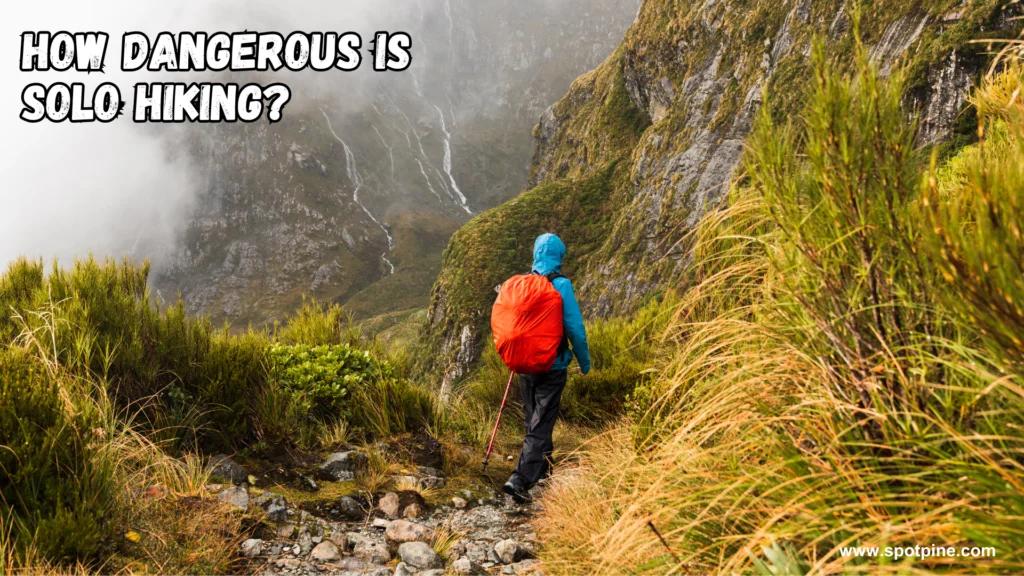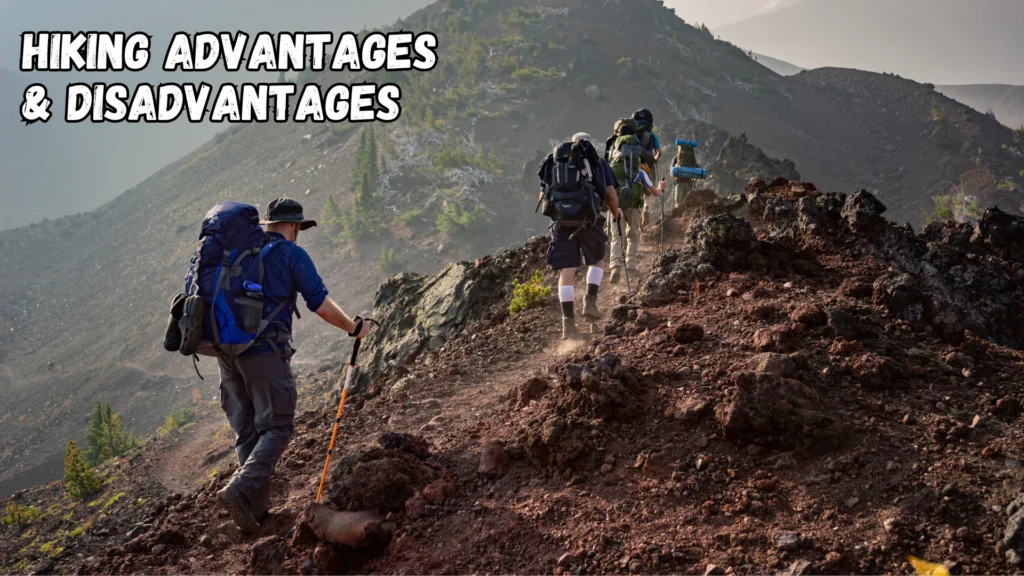Solo hiking can be dangerous, posing various risks such as getting lost, encountering wildlife, experiencing injuries, dehydration, or adverse weather conditions. However, safety measures such as informing someone about the trip, carrying proper equipment and maps, and being knowledgeable about the trail can minimize the danger.
While some people prefer hiking alone, others feel uneasy about the idea and opt to bring along a partner or join group hikes. This article will delve into the pros and cons of hiking solo, examine the risks and how to mitigate them, and offer insights into whether solo hiking is safe or not.
Understanding Solo Hiking
Solo hiking can be dangerous if not done with proper caution and preparation. It is important to notify someone of your plans and location, carry appropriate safety equipment, and be aware of potential hazards such as wildlife, getting lost, injuries, dehydration, and weather.
| Definition of Solo Hiking: | Solo hiking refers to hiking without any companions or partners. It involves completing the trail or route alone, without any physical support. |
| Statistics on Solo Hiking: | While solo hiking in itself is not dangerous, it can become risky if proper precautions aren’t taken. The most common mistake experienced hikers make is taking off alone without notifying anyone. Hikers should be sure to tell someone where they are going and when they plan to be back. Some disadvantages of hiking alone include loneliness, having to do everything, and not having someone to go for help if needed. However, solo hiking provides a sense of independence, connection with nature, and time to know oneself better. To feel more comfortable when hiking solo, hikers can carry some sort of self-protection tool such as mace, pepper spray, a whistle, a knife, or even a firearm. |
Risks Involved In Solo Hiking
While solo hiking is not inherently dangerous, experienced hikers often make the mistake of not notifying anyone before taking off alone. It’s important to tell someone where you’re going and when you plan to return. Other risks of solo hiking include facing wildlife, dehydration, getting lost, and sustaining injuries without anyone around to offer help.
Make sure to prepare for emergencies and consider carrying a self-protection tool when hiking solo.
| Risks Involved in Solo Hiking |
| Dangers of Wildlife |
| Solo hikers are at risk of encountering wildlife such as bears, wolves, and snakes that could pose a danger to their safety. It is important to know how to handle a wildlife encounter and carry self-protection tools like mace, pepper spray, bear spray, or a whistle. Always keep distance and respect wildlife to avoid any unwanted incidents. |
| Injuries |
| When hiking alone, there is no one to rely on for help in case of an injury. This could increase the severity of the injury and threaten the hiker’s life. It is important to carry a first-aid kit, a map, and a GPS device and know basic first-aid and survival skills. |
| Getting Lost |
| Solo hikers are more susceptible to getting lost or disoriented, especially if they venture off-trail. It is important to have a map, compass, and GPS device and know how to read them. Avoid hiking during bad weather or when visibility is poor. Tell someone where you’re going and your expected return. |
| Dehydration and Starvation |
| When hiking solo, it’s easy to forget to drink enough water or carry enough food. This could lead to dehydration or starvation, which could be life-threatening. Carry enough water and food and know how to ration it. Learn to identify edible plants in the area. |
| Unpredictable Weather |
| Weather conditions can change rapidly in the mountains, increasing the risk of hypothermia, frostbite, or heat stroke. It is important to check the weather forecast before going and carry appropriate clothing and gear. If caught in a storm, find shelter and wait it out. |
Challenges Faced By Solo Hikers
Many people enjoy hiking alone, but it comes with unique challenges that need to be considered before hitting the trail. One of the primary challenges faced by solo hikers is loneliness, which can lead to anxiety and negativity. Additionally, in case of an emergency, a solo hiker is entirely responsible for getting themselves out of trouble, without any help. Therefore, it is essential to be prepared and carry all necessary gear. Managing all tasks alone can also be challenging, as there is no one to share the load with. However, solo hiking can be a rewarding experience that allows individuals to connect with themselves and nature.
Credit: oceanstoalpines.com
Preparing For Solo Hiking
When it comes to solo hiking, preparation is key to ensure a safe and enjoyable experience. A few essential pieces of equipment to consider bringing along include sturdy hiking boots, a backpack, a first aid kit, a map and compass, and a fully charged phone in case of emergencies. In addition, it is important to maintain a good fitness level before embarking on a solo hiking trip, as this will help you endure the physical demands of the journey. Before setting out, thoroughly plan your route, including the terrain, distance, and expected weather conditions. It is always wise to inform someone of your planned route and estimated time of return as part of your emergency plan. With proper preparation, solo hiking can be a rewarding and safe adventure into nature.
Safety Measures During Solo Hiking
While solo hiking can be an exciting way to explore nature, it’s important to take certain safety measures. One of these measures is communication with friends or family. Always inform someone where you are going and when you plan to be back. Another important safety measure is having navigation skills. Make sure you have a map and a compass or GPS device. Additionally, carrying self-protection tools can make you feel safer during the hike. These tools can include bear spray, a whistle, a knife, or even a firearm if it’s legal in the area. A solo hike in itself isn’t necessarily dangerous, but it’s important to take the necessary precautions to ensure a safe and enjoyable experience.
Benefits Of Solo Hiking
While there are potential dangers associated with solo hiking, there are also many benefits. One of the most appealing aspects of hiking alone is the sense of independence and freedom it provides. Without the distractions and opinions of others, solo hikers can better focus on their own thoughts and feelings. This leads to increased self-awareness and reflection. Another benefit of solo hiking is the opportunity to connect with nature on a deeper level. With only the sounds of the wilderness surrounding them, solo hikers can fully immerse themselves in their natural surroundings. Despite the benefits, it’s important to take precautions when hiking alone, such as informing someone of your plans and carrying self-protection tools in case of emergencies.
FAQs
Is It Dangerous To Solo Hike?
While solo hiking is not automatically dangerous, it can be risky if done without notifying anyone. Always be sure to inform someone of your hiking location and expected return time. Carrying a self-protection tool like mace or a whistle can also help you feel more comfortable when hiking alone.
Is It Scary To Hike Alone?
While solo hiking is not automatically dangerous, it can be scary for some due to bears, injury or feeling alone. It’s important to notify someone where you’re going and when you plan to return. Carrying self-protection tools such as pepper spray, a knife, or a whistle can help with comfort.
Solo Hiking: Overcoming Fear and Embracing the Adventure.
What Are The Disadvantages Of Hiking Alone?
Hiking alone has its disadvantages such as risks of wildlife, getting lost, injury, dehydration, and adverse weather conditions. Solo hiking can be lonely, and you must do everything yourself, and you don’t have anyone around to help in case of an emergency.
It is necessary to inform someone where you are going and when you plan to return.
What Is The Best Defense For Hiking Alone?
The best defense for hiking alone is to notify someone about your hiking plan and expected return time. Additionally, consider carrying self-protection tools such as pepper spray, mace, a knife, and even a whistle. It is risky to hike alone, but with proper preparation and precautions, you can reduce the risks.
Conclusion
Solo hiking can be both thrilling and dangerous, depending on how prepared you are. Being an independent hiker carries its own risks, such as the threat of dehydration, wildlife, getting lost, or injured. However, solo hikes can be a rewarding and self-affirming experience, provided you take the necessary precautions.
Keep in mind the risks and safety measures discussed in this blog post before embarking on your next outdoor adventure alone. With proper preparation, you can overcome your fear and embrace the excitement of solo hiking.



